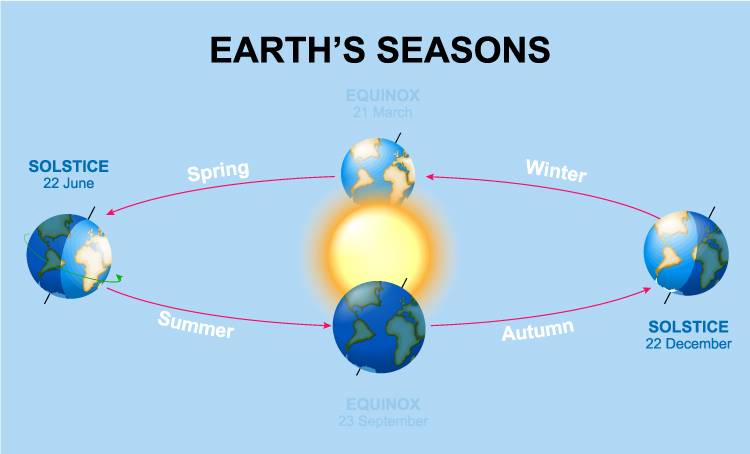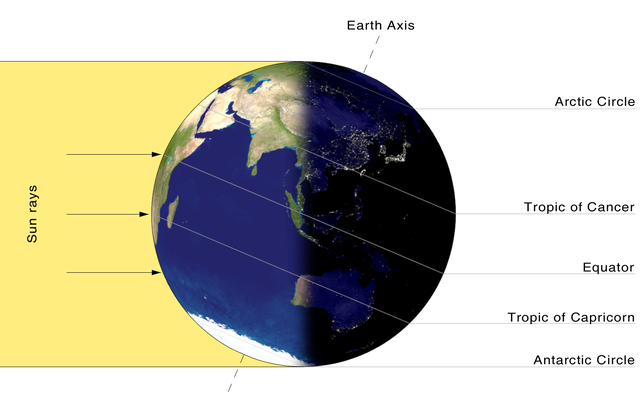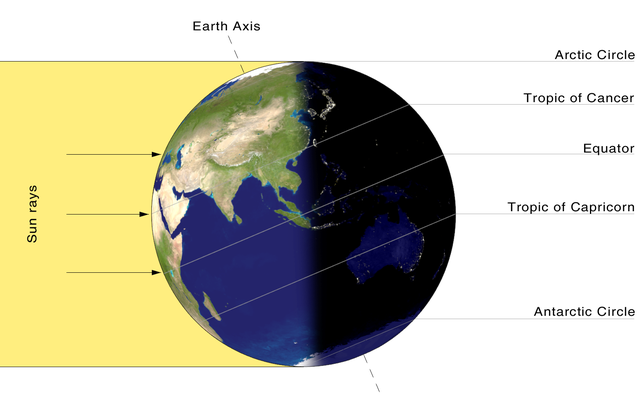Solstices
What are the summer and winter solstices?
Goal:
Goal:

Just like the equinoxes, there are two solstices each year. In the northern hemisphere, the summer solstice is in June, and the winter solstice is in December. In the southern hemisphere, it's the opposite.

A solstice refers to the time of year when the sun is at the furthest point north or the furthest point south of the equator. The longest and shortest days of the year are during the solstices. The northern hemisphere's longest day is the southern hemisphere's shortest. The northern hemisphere's shortest day is the southern hemisphere's longest.
Summer SolsticeThe summer solstice has the longest day of the year and the shortest night. The north pole is titled towards the sun at this time. The sun is directly over the Tropic of Cancer at 23.5° N. More hours of sunlight occur during the summer solstice. |
Review what time of year the solstices occur in the northern hemisphere.
| Solstices | Time of Year |
|---|---|
| summer solstice |
June |
| winter solstice |
December |

